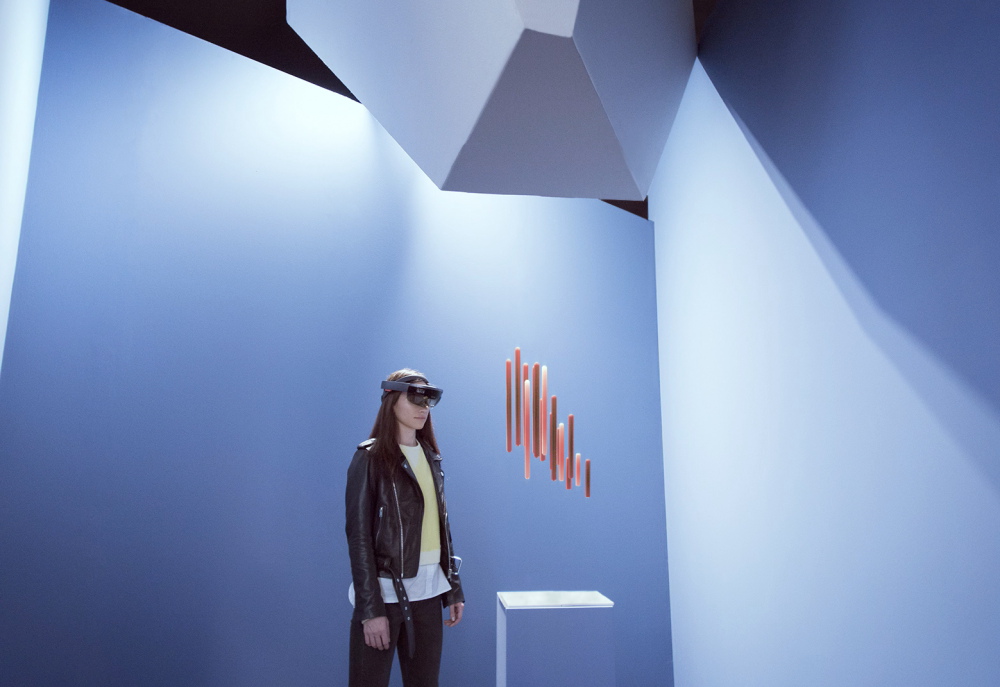Studio O+A’s Primo Orpilla shares how VR could offer designers an infinity of choices in 2022 and beyond.
– Stay tuned as we share more 2022 workplaces trends for the entire month of December –

As companies bring their staff back to the office after almost two years of working from home, integrating hybrid work habits with pre-pandemic office culture is a design challenge all of us in the field will face. At Studio O+A we’re coming back gradually—two days a week for most staff, the remaining days to be worked at each individual’s discretion from home or at the office. “At each individual’s discretion” is the pandemic’s contribution to workplace design. I have to say our people have been just as energetic, just as dedicated working from their kitchen tables or a corner of their bedrooms as they were in our San Francisco office. I could make a good case that being at home in control of their own time and with greater agency over what they do and when they do it released in our most creative staff an independence and an eagerness to experiment that has definitely benefited the firm. These folks took lemons and made lemon layer cake, multiple stories high.
Like a lot of companies, ours is prepared to make working from home (which, of course, was bouncing around the ecosystem years before COVID) an ongoing part of our operations. But that decision comes with a question: How do we recover the social and creative benefits that derive from meeting face-to-face in a physical space? How do we hang on to the flexibility all of us got used to during lockdown while continuing to build those personal connections that make time in the office more than a job? One thing we all learned from 20 months of Zoom: Design is not just a skill; it’s a culture.
Design is not just a skill; it’s a culture.
Not long ago, we celebrated our 30th anniversary with a series of panel discussions (and a party) that brought together in real time and space some of the people who pioneered design in the Bay Area. As we listened to folks like John Randolph, Mark Horton, Pamela Babey, Kathleen Kelley and others recall the early years of their careers, it became clear how important it had been to all of them to be aware of each other’s work, to meet in galleries and bars and lecture halls and talk design one on one. Are we giving the next generation of designers those same opportunities?
I’m wondering if VR has a role to play. What if instead of using VR to bop with mandrills and boogaloo with buffaloes, as in the new Metaverse ad, we used it to get back some of the face-to-face immediacy we’ve lost working from home? Could walking down a virtual hall from my office in San Francisco to visit a colleague in her virtual office in Honolulu or London be a community-building experience? If instead of escaping into fantasy, we used the metaverse as a door into someone’s world, could that be a viable substitute for time not spent in their company?
VR offers another choice—actually, an infinity of choices.
The trajectory of workplace design over the decades has been steadily toward giving people more choices. Where you work, when you work, how you work—the pandemic accelerated our progress down that path. VR offers another choice—actually, an infinity of choices. If your day suggests taking your laptop outside and working from a park bench, that will always be an option. But if it’s raining and you still feel like working outdoors, you can relocate virtually to a redwood forest or an oil rig on the Black Sea. My point is, the choice is yours and if your work benefits from a particular setting or a menu of settings attuned to your moods, who’s to say that can’t generate a vibrant work culture?
Just typing that thought I can hear objections and think of complications—but it strikes me as a cool dilemma and a design challenge like no other we’ve ever faced. We may be entering a period when climate impacts will limit how much physical travel we can responsibly do. That will make virtual travel more necessary and give virtual design a more serious purpose than creating imaginary worlds. I’m thinking workplace design firms like mine might soon support two departments—the analog teams that create work environments with real walls and windows and the virtual teams that equip every client with duplicate spaces they can draw down from the cloud.
Where you host a meeting could become a way of signaling what’s ahead. If I choose for my location Da Vinci’s Last Supper and seat a water buffalo at the table, surely everyone will get the message that this time I mean business!

